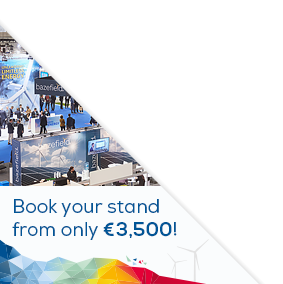Posters
Siblings:
ProceedingsProgrammeProceedingsSpeakersPostersContent PartnersElectrification StageMarkets TheatreR&I ActivitiesStudent DayProgramme Committee & abstracts reviewersPresenters dashboardCome meet the poster presenters to ask them questions and discuss their work
We would like to invite you to come and see the posters at our upcoming conference. The posters will showcase a diverse range of research topics and provide an opportunity for delegates to engage with the authors and learn more about their work. Whether you are a seasoned researcher or simply curious about the latest developments in your field, we believe that the posters will offer something of interest to everyone. So please, join us at the conference and take advantage of this opportunity to learn and engage with your peers in the academic community. We look forward to seeing you there!

PO183: Offshore turbulence intensity - untangling requirements for design
Jon Collins, Lead Data Scientist, Wood Thilsted
Abstract
Phenomenal offshore wind capacity targets have been set by countries across the globe. The rates of development of offshore wind farm (OWF) projects will, necessarily, increase to meet these targets. As such, efficient flow of the correct information, at each interface of an OWF project lifecycle, is paramount. Design of the turbines and foundations is a key part of the development of an OWF, and requires detailed understanding of the site atmospheric and oceanographic conditions. With increasing pressures on achieving lower cost of energy in the backdrop of increasing supply and material costs, a drive for efficient designs which reduce conservatism whilst maintaining safety is underway. Having a clear and accurate understanding of the conditions at an OWF site will allow any unnecessary conservatism to be reduced. In this spirit, the authors would like to share useful and practical advice that will contribute to the progression of the industry as a whole, regarding the characterisation of Turbulence Intensity (TI) as an input to OWF design. TI is a required input for both turbine and offshore foundation design as part of Integrated Loads Analyses (ILAs). Although TI is largely a driver of fatigue loads, it is also necessary to quantify extreme TI levels for Ultimate Limit State (ULS) simulations. Industry standards require a Normal Turbulence Model (NTM) and Extreme Turbulence Model (ETM) to be defined for a site. The standards provide equations to derive approximations for these models. Whilst the NTM is generally well understood, in the authors' experience, a consensus on the derivation of an appropriate ETM for an OWF site is less well established. The authors present a comparison of various NTMs and ETMs, at selected offshore measurement sites, providing confidence in these approximations and clear advice on how to apply them in the context of design and certification.







